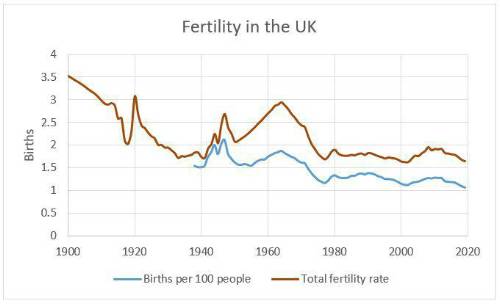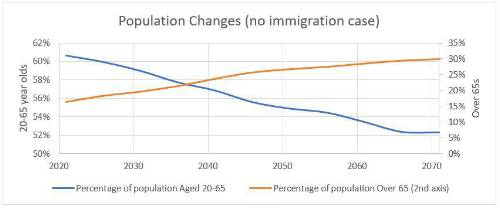By Alex White, Head of ALM Research, Redington
However, there are certain fields in which you can make fairly good predictions, and demographics can be one of them. For example, if
I know how many 20-year-olds there are in the world, I can hazard a pretty good guess as to how many 30-year-olds there will be in 10 years’ time. These predictions could still be wrong (especially during wars or pandemics), and at a national level they can be shifted by net immigration; but you can still make a pretty good guess over a reasonably long horizon.
So what do the demographics look like in the UK?
For one thing, fertility rates are low. The total fertility rate (TFR) measures the number of children a woman will have if she has the average number of children at each age (and average life expectancy). To keep a stable population, the TFR needs to be just above 2, to offset deaths. In the UK, it is 1.65 and has been around that figure since the 1970s. The number of births per year is lower because the UK has an older population.

Already, then, this would imply a declining population. But the story gets worse because we can extrapolate how the population evolves (albeit somewhat crudely). We assume mortality in line with 2017-2019, 1% improvement per year, and that everyone has 1.65 children when they hit 30 (the median age for a woman to have her first child is 29, so for all children it will be slightly higher).
The results are not very sensitive to any of these assumptions; for context, the picture is basically the same even with a fertility rate of 2.
What we get is a declining working-age population and a rapidly growing pensioner population. Since pensioners make up the bulk of welfare state costs (via pensions and medical care), this would equate to a roughly 80% increase in those costs, funded by a working population roughly 15% smaller. Some of this can be partially mitigated by having everyone work longer and retire later, but as the experience in Japan has shown, managing an ageing population can be extremely difficult.

However, there is a deus ex machina missing here, and that is immigration. Needless to say, it is a complex subject with several societal and cultural nuances. However, at a high level, the maths is pretty clear. The UK needs an influx of young people over the next few decades to keep the economy going. Could it be, then, that immigration is the answer we are looking for?
|


